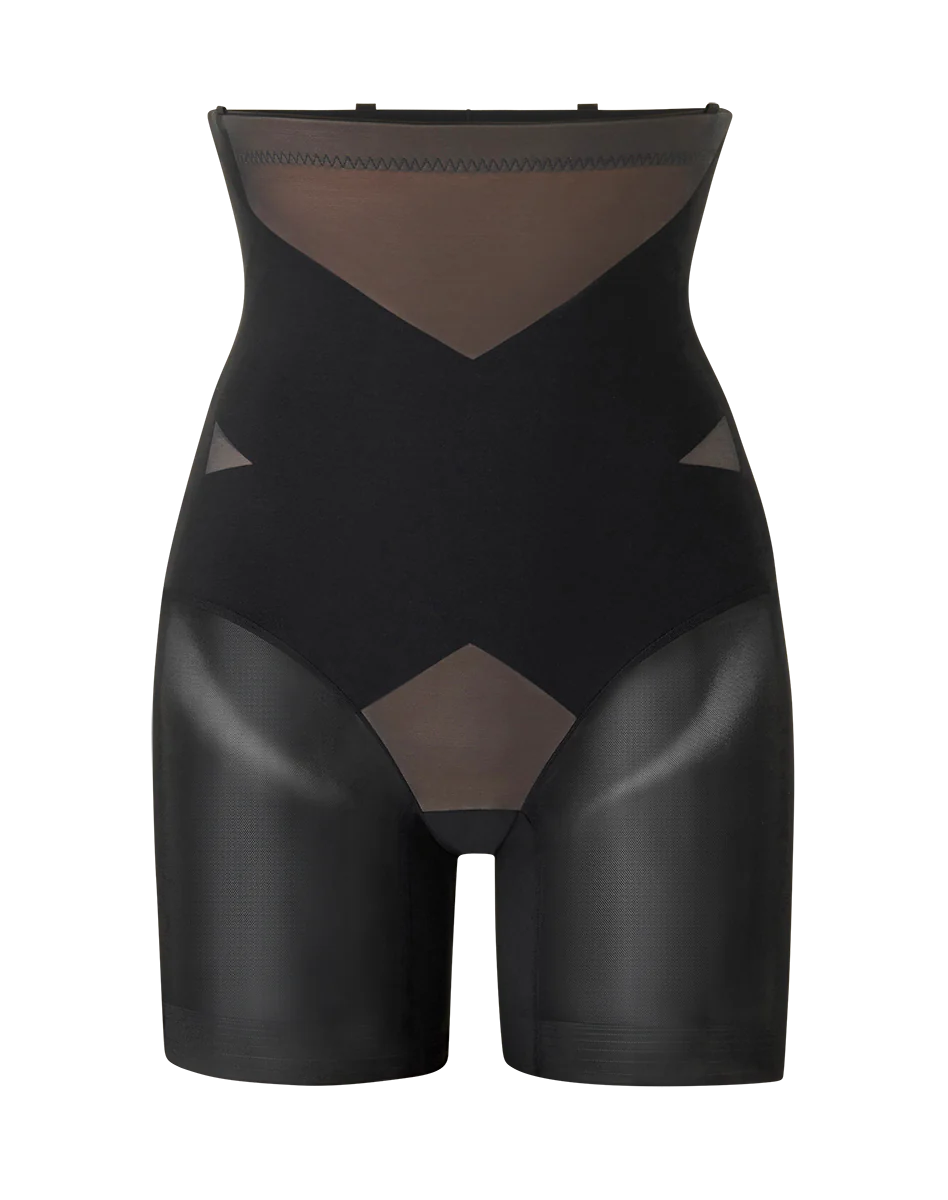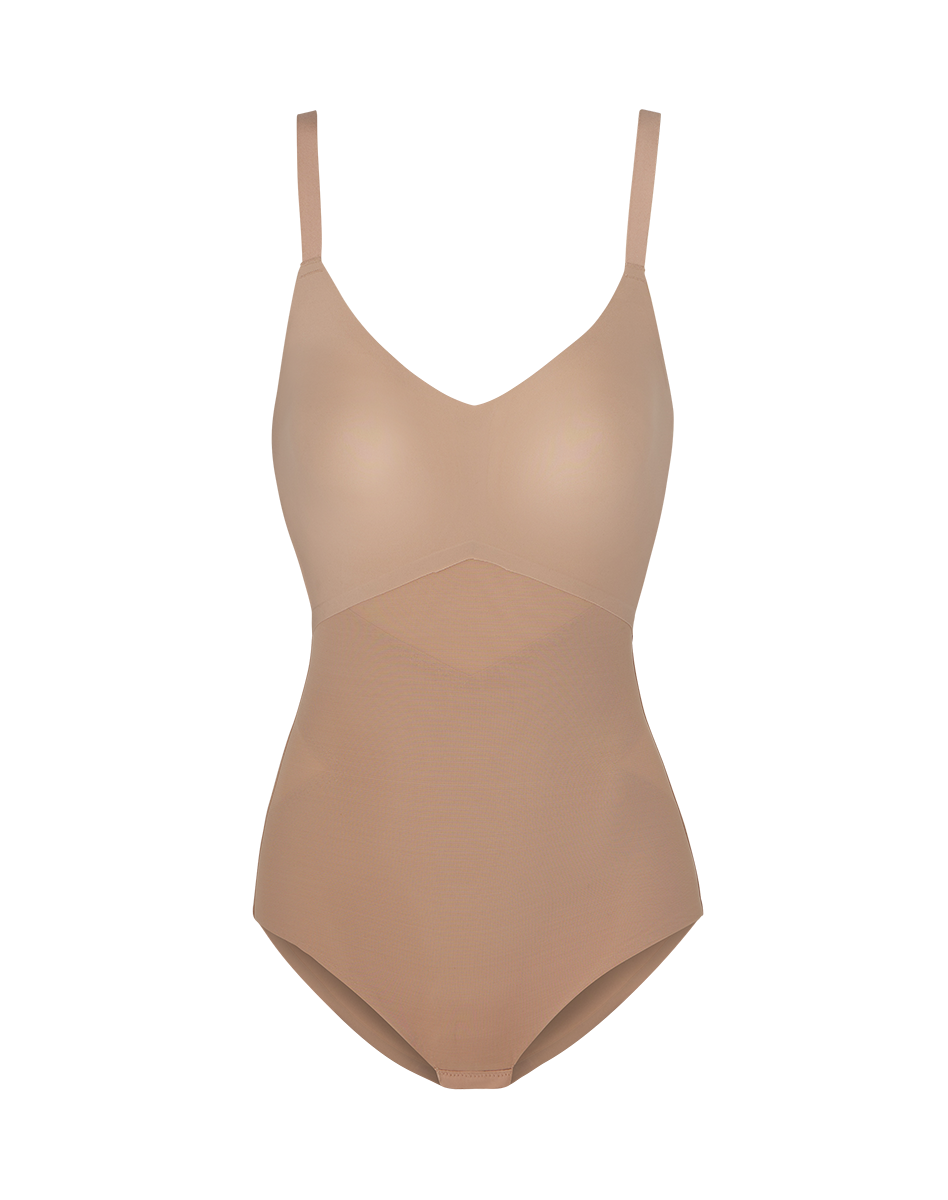
The ultimate bra sizing guide
April 1, 2024
Have you ever worn a bra and realized it wasn’t quite fitting you in the way you wanted? Sometimes, finding a new bra size is as simple as identifying your fit issue. We’ll show you how to a) identify what part of the bra isn’t fitting properly, and b) determine a better bra size for your body based on what issues you’re having. We’ve even included a handy bra size chart that you can use to help you solve the fit problem you’re experiencing.
FIT ISSUE #1: Your band fits, but the cup is too small or too large.
Signs you may be experiencing this fit issue:
Cup Gaping: Gaps or wrinkles in the cup indicate that the cup size is too large, leading to poor support and an unflattering silhouette.
Solution: Opt for a smaller cup size or try bras with different cup styles that better conform to your breast shape, such as molded cups or contour bras.
Quad Boob: When breast tissue spills over the top of the cup, creating a “quad boob” effect, it’s a sign that the cup size is too small.
Solution: Select a larger cup size to ensure all breast tissue is contained within the cups. You may also need to adjust the band size accordingly for proper support.
Start by identifying your current bra size on the bra size chart at the bottom of this article.
In this example, let’s say your original size is a 34C. If you are looking for a smaller cup with the same band size, you would move up vertically to a 34B. If you’re looking for a larger cup with the same band size, you would move vertically down to a 34D.

FIT ISSUE #2: Your cup fits, but the band is too tight or too loose.
Signs you might be experiencing this fit issue:
Underwire Digging In: If the underwire of your bra digs into your skin, it can cause discomfort and even bruising.
Solution: Ensure the underwire sits flat against your ribcage and encloses your breast tissue fully. If it digs in, try adjusting the band size or opting for a bra with a different underwire shape.
Band Riding Up: A bra band that rides up in the back indicates that it’s too large, leading to inadequate support.
Solution: Choose a bra with a snug-fitting band that sits parallel to the ground. You may need to decrease the band size and increase the cup size for a proper fit.
In this case, you’d go diagonally. Go down to the left corner if you need a smaller band, or move up to right corner if you need a larger band. I know it feels counterintuitive that you would need to change your cup size as well, but if you’re solely trying to address the fit of your band, you’ll need to make an opposite but equal change in your cup size as well to keep the same fit in the cups. These are also known as your sister size. For more information on sister sizing, check out this blog post.

FIT ISSUE #3: Your cup and band are either both too big, or both too small.
Signs you might be experiencing this fit issue:
Restricted Movement: If your bra restricts your movement or feels too tight, it may indicate a sizing issue.
Solution: Ensure the band provides firm support without feeling overly tight. Consider trying a larger band size or a bra with more stretch in the fabric for increased comfort and mobility.
To solve for this, you’ll move horizontally. If you move to the left, you’ll get a smaller band and cup. If you move to the right, you’ll get a larger band and cup. So, if you’re wearing a 34C, but you need a bigger size, you’ll move up to a 36C. If you need a smaller size, you’ll want to try a 32C.

Want to try this on your own? Here’s a chart for you to practice! Locate your current bra size on the chart, then move accordingly based on the fit issue you’re experiencing.

ADDITIONAL FIT ISSUES
Sometimes solving a fit issue isn’t linked to going up or down in sizing. It may be solved by making slight adjustments to your bra, or by trying another style of bra that works better for your body type.
Straps Digging In: Straps that dig into your shoulders can cause discomfort and leave marks.
Solution: Adjust the straps so they provide support without digging into your skin. Consider bras with wider or padded straps for added comfort.
Uneven Breasts: If one breast appears larger or spills out more than the other, it may indicate a fit issue.
Solution: Choose bras that accommodate the larger breast, such as adjustable bras with removable padding or bras with stretchy cups that conform to your breast shape.
Lack of Support: A bra that doesn’t provide adequate support can lead to discomfort and back pain.
Solution: Ensure the bra band provides the most support by fitting snugly around your ribcage. Consider bras with underwire or reinforced side panels for added support.
Slipping Straps: Straps that constantly slip off your shoulders can be irritating and compromise support.
Solution: Tighten the straps to ensure they stay in place without digging into your shoulders. If they continue to slip, consider bras with convertible or racerback straps for better stability.
Bulging Under the Arms: If you notice bulges of flesh under the arms or around the sides of the bra, it may indicate an improper fit.
Solution: To contain underarm bulges, opt for bras with wider side panels or higher wings. Ensure the band fits snugly and doesn’t ride up, which can exacerbate the issue.
Puckering Fabric: Fabric that puckers or wrinkles in the cup area suggests a mismatch between the bra size and your breast shape.
Solution: Try bras with different cup styles or constructions to find one that fits your breast shape more seamlessly. Molded cups or contour bras may help eliminate puckering.
Center Gore Doesn’t Lie Flat: The center gore, the piece of fabric between the cups, should lie flat against your sternum. It may indicate the cups are too small or too close together if it doesn't.
Solution: Choose bras with a wider center gore or try styles with a different cup construction that accommodates your breast shape better.








